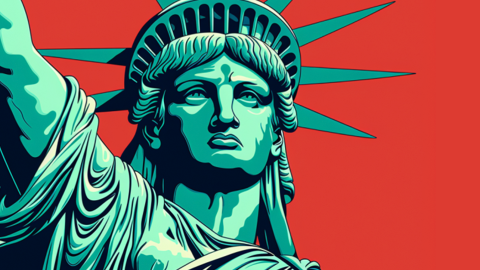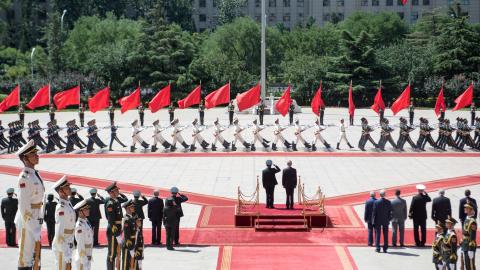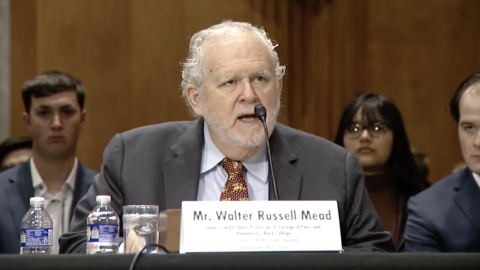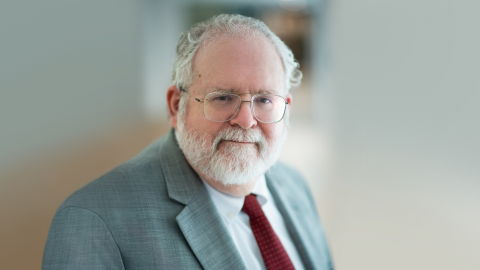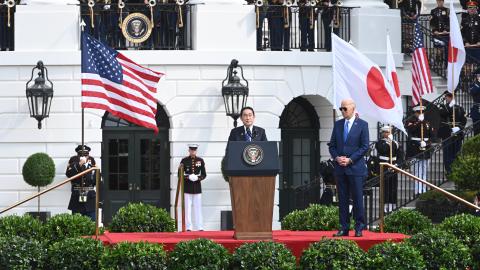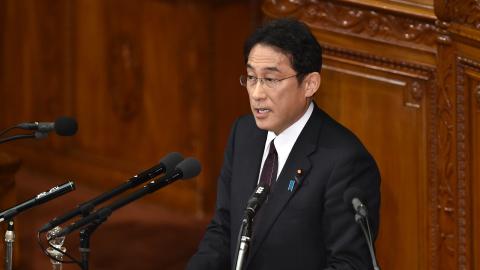The definition of democracy is not clear and it is not uniform. Japan and South Korea have the fundamental structures of democracy, including free elections, a multiparty system, and freedom of assembly. However, the software of their democracy looks different than that of Western countries.
“Cherish the harmony among people” was the first article of the 17-article constitution of Japan enacted by Prince Shotoku in 604 AD. In other words, to hold discussions until everyone is satisfied and decides unanimously. Of course, in that era, Prince Shotoku wouldn’t have any idea about democracy, but his thinking, the principle of consensus, might be essential to democracy.
The principle comes from Confucianism, also known as Ruism, a system of thought and behavior originating in ancient China, stemming from the teachings of Confucius (551–479 BC). Confucianism is the veins of the people and key to democracy and society in Asia. It is even key to understanding mainland China, ruled by the Chinese Communisty Party, and North Korea under the Kim dynasty and its Communist Party.
The philosophy of the 17-article constitution is still alive in Japanese democracy. Prince Shotoku’s portrait was used for Japanese banknotes from 1930 to 1986, with seven kinds of banknotes. A ruler 1,400 years in the past is still widely recognized.
Turbulent Times
The history of democracy in Japan and South Korea is deeply related to their turbulent history, especially since the 19th century. To understand the background, look briefly at the history of the Far East before World War II.
The Meiji Revolution in Japan ended the Samurai warrior-feudal society structure in 1868. It also called for restoration of Imperial rule and “civilization and enlightenment.” European countries, especially the United Kingdom, strongly influenced those Meiji-era movements, and the Japanese people believed that copying Western style would equal the modernization of Japan.
They not only copied clothes and hairstyles, but also got firm advice about having a strong military. Japanese learned that democracy, militarism, and colonialism were keys to the modernization of their country.
As a function of the struggle among European powers for influence in Asia, they sold Japan warships, cannons, and other military equipment. The Sino-Japanese War over the control of Korea broke out in 1894, and Japan defeated China gaining power over of Korea, Taiwan, and the Penghu Islands. In 1904, the Russo-Japanese War erupted.
Moscow and Tokyo battled over influence in Manchuria and Korea. Japan attacked the Russian naval base at Port Arthur (now Lüshun, China) and won several naval and land battles. International observers believed Russia was winning, but Japanese victories on land—the first by an Asian power over a European one—and in the decisive sea battle of Tsushima Straits that shattered Russia’s Baltic Fleet, confirmed a new reality. Through these two wars, Japan aimed to create a modern state after the Meiji Revolution and show a new power in Asia.
However, although Japan felt it had won both wars, it lost in the negotiations with China and Russia. Japan’s treaty with China was unacceptable to Russia, France, and Germany (known as the Triple Intervention of 1895). They pressured Japan to return the Liaodong Peninsula to China, fearing Japanese expansion in Manchuria. Japan reluctantly agreed to do so in exchange for an additional indemnity from China. At the same time, Japan felt humiliated and resentful toward the three and, in addition, faced resistance from the Taiwanese people who did not want to be ruled by Japan. The Treaty of Shimonoseki was a mixed blessing for Japan, as it gained some benefits but also posed challenges and frustrations.
In 1905, President Theodore Roosevelt mediated the Treaty of Portsmouth. Signed in New Hampshire, the treaty forced Russia to recognize Japan’s interests in Korea and southern Manchuria, and giving Tokyo the lease on Port Arthur and the Liaodong Peninsula.
But Japan wanted more, including a large indemnity from Russia. American intervention persuaded Japan to drop that demand. Japan also wanted recognition of its exclusive rights in Korea, but the treaty only stated that Russia would leave Korea and respect Japan’s “paramount political, military, and economic interests” there.
Japan felt that it did not get enough compensation and that Washington favored Russia. There were riots against the treaty in Tokyo and other cities. The Treaty of Portsmouth, for which Roosevelt received the Nobel Peace Prize, managed to be both a partial diplomatic victory for Japan, but also a source of ongoing dissatisfaction and frustration.
Democracy and Militarism
The democratic era in Japan is often said to have begun in 1905 and lasted until the end of the Taishō era (1912–1926), the so-called “Taishō Democracy.” On the other hand, Japanese militarism refers to the ideology of the Empire of Japan, which advocated that militarism dominate the political and social life of the nation and the idea that the power of a country is equal to the strength of its military.
Japan introduced parliamentary democracy as the Constitution of the Empire of Japan, which was modeled on the Constitution of the German Empire in 1890 and also advanced military power from Europe through government initiatives. This democracy was introduced by the government as a necessary condition for modern style governance without any ideological or conceptual thinking about democracy.
However, the establishment of popular sovereignty and the parliamentary democracy based on it came only in 1947 at the initiative of the United States, which then occupied Japan and wrote its post-war constitution. Defeat in World War II had collapsed all pre-war and wartime governmental institutions.
The Korean Conundrum
Tokyo long considered the Korean Peninsula a key strategic area and conflict between the two goes back to the 13th century. In 1274 and 1281, the Mongolian Yuan dynasty and Korea attacked Japan twice, but failed to conquer it. In the 16th century, Japan attacked Korea twice, without either victory or defeat.
At the same time, Korea was a relay point for trade and the importation of Chinese culture to Japan. Korea also had its original arts and cultures that China influenced. As one example, many Korean pottery makers were brought to Japan.
Japan annexed Korea in 1910 and ruled there until the Japanese surrender of 1945. Its colonial policy of dominance and its lack of experience in Korea not only led to several conflicts but also left emotional damage between the two.
After 1945
The Tripartite Pact was signed between Germany, Italy, and Japan in September 1940. Hungary, Romania, Slovakia, Bulgaria, Yugoslavia, and the Independent State of Croatia signed the pact individually. The pact ended on May 7, 1945 with the surrender of Germany to the Allies. Japan surrendered on August 15.
Released from the war they had launched, the Japanese suddenly faced miserable lives. General Douglas MacArthur and his counterpart, Prime Minister Shigeru Yoshida, were successful in helping people rebuild their lives and in introducing American-style democracy based on the new Japanese constitution. At the same time, communists openly and rapidly expanded their activities. During the 1932 – 1945 era of militarism, their movement was underground and oppressed.
Communist activities rapidly expanded during the occupation, and many returning Japanese soldiers from the concentration camps in Siberia were activists as they were educated in communism there. They wrote an “appreciation letter” to “His Excellency Generalissimo Joseph Stalin” with their signatures and sealed with their blood.
Twice, in 1960 and 1970, revisions to the security treaty between the United States and Japan stimulated intense opposition to the agreement treaty by communists and others on the extreme left wing. They called for “democracy,” but simply used the demand to justify their riots. Their activity, especially on the extreme left wing, peaked in the 1970s.
The Japanese Communist Party, founded in 1922, faces decreasing membership and approval ratings today.
South Korean Democracy
Japan and South Korea are democratic countries in today, but they have distinct historical and cultural contexts that have shaped their respective systems.
As a defeated country, Japan had to accept American policy and direction, including American-style democracy. The story of democracy in South Korea was not as simple.
The annexation of Korea by Japan in 1910 ended with the end of World War II, releasing the people of the Korean Peninsula from colonial suppression. But Soviet occupation forces established a communist regime in the north, while the United States backed an anti-communist military government in the south.
From 1950 to 1953, the Korean War featured Chinese Communist backing of the North’s Democratic People’s Republic of Korea (DPRK), established on Sept. 9, 1948 by Kim Il Sung, and the South’s Republic of Korea (ROK), established Aug. 13, 1948 by Syngman Rhee, supported by the United States as head of the United Nations’ forces. Beijing and Washington with their allies, deployed hundreds of thousands of troops to Korea.
The Korean Armistice Agreement was signed between the United Nations Command, North Korean leader Kim Il Sung, and China in 1953. South Korea never signed because ROK President Syngman Rhee refused to accept that he had failed to unify Korea by force. The Korean Peninsula is, technically, still at war under the Armistice Agreement today.
South Korea was a dictatorship with a president from its establishment in 1948 until 1987, its path to democracy marked by periods of authoritarian rule and pro-democracy movements. During the 1980s, the country experienced several military coups and authoritarian regimes. However, in 1987, widespread protests and actions pushed for democratic reforms. ROK introduced a direct presidential election, released political prisoners related to the democratization movement, and guaranteed freedom of speech. It was just one year before the 1988 Summer Olympics in Seoul and the country’s leaders, pushed by the public, found it necessary to introduce democracy to hold the Olympic games.
Key features of South Korea’s Democracy include:
A presidential system: The president is the head of state and government and is elected through a direct popular vote.
The National Assembly: South Korea’s legislative body is the National Assembly, a unicameral legislature. Members of the National Assembly are elected through direct elections.
Civil society and protests: Civil society organizations and mass protests played a crucial role in pushing for democratic reforms in South Korea. The June Democracy Movement of 1987 marked a turning point, leading to significant political change and establishing a more democratic system.
Competitive politics: South Korea has a multiparty system with various political parties competing in elections. The Democratic Party of Korea (DPK) and other parties have been prominent in the political landscape.
It is important to note that both Japan and South Korea have had unique challenges and issues related to democracy, ranging from political corruption to regional tensions. However, they have made substantial progress in building and maintaining institutions that allow citizens to participate in the political process and make decisions that impact their countries.
The June 29 Declaration, officially titled the Special Declaration for Grand National Harmony and Progress Towards a Great Nation, was a speech by Roh Tae-woo, presidential candidate of the ruling Democratic Justice Party of South Korea, in 1987. Roh promised significant concessions to opponents of the incumbent authoritarian regime of Chun Doo-hwan, who had been repressing democracy. Roh went on to win the open presidential election held that year, the first since the October Yushin of 1972. The Yushin was a self-coup by President Park Chung Hee of South Korea, in which he abolished the constitution and assumed dictatorial powers.
Japan’s Responsibility
There is no “if” in history. However, there are still several questions that arise about the history and responsibility of Japan under its militarist ideology and leaders.
Japan repeatedly has made statements of self-review and apologized for what the country did during WWII. However, the statements have been seen as grudging and partial by many in the countries Japan had occupied before and during the war and, as a result, have not reached the hearts of people in Asia.
Most Japanese had little actual information or experience about what Japanese forces did outside the country during the war. Their personal experiences were losing their sons or husbands on the fronts, or heavy so-called carpet bombings all over Japan by the US forces, including the atomic bomb destruction of Hiroshima and Nagasaki, and memories of the more than 600,000 Japanese soldiers who were interned in the Soviet Union and Mongolia and worked in labor camps as POWs under pitiless conditions. Almost 10 percent of the prisoners died.
Therefore, most Japanese people want to be perceived as victims of World War II-era militarism, or at least want depression and wartime Japan to be seen that way. This even though they should recognize that they were/are perpetrators. It might be that psychologically, they want to escape their heavy obligation.
On this subject, a historic speech by Richard von Weizsaecker, President of Germany, delivered in 1985 at the 40th anniversary of the end of World War II should be remembered:
When the unspeakable truth of the Holocaust became known at the end of the war, all too many of us claimed they had not known anything about it or even suspected anything.
He spoke of the danger of forgetting and distorting the past.
There is no such thing as the guilt or innocence of an entire nation. Guilt is, like innocence, not collective but personal. There is discovered or concealed individual guilt. There is guilt that people acknowledge or deny. All of us, whether guilty or not, whether young or old, must accept the past. We are all affected by the consequences and liable for it. We Germans must look truth straight in the eye—without embellishment and distortion. There can be no reconciliation without remembrance.
His speech was based on the philosophy of his elder brother, Carl von Weizsaecker. The key point of his remarks was the importance of telling the truth and conveying historical experience to young people who will be responsible for the future so they do not repeat past mistakes.
Collective Democracy
Democracy as an institution and the behaviors of people who live in a democracy are different. A question might be considered as to whether democracy is individual or collective. The feature of democracy in Japan and South Korea might be that of a collective democracy.
Democracy fundamentally demands self-establishment for people’s responsibility for its functioning. However, people in Japan and South Korea aren’t aware of self-establishment. That might be the fundamental and significant differences between democracy in Europe and Asia. It might come from a historical background of individualism and the establishment of the self. It is also an issue between individuals and groups; Japanese and South Korean people feel secure belonging to a group, but collectivism increases the vulnerability of democracy. The practice or principle of prioritizing a group over each individual could produce results similar to militarism, communism, and socialism.
Democracy and Individualism
Confucianism is an underlying norm in Asia, even in mainland China and North Korea, and it appears not to be contradictory to democracy or communism. A system of thought and behavior originating in ancient China, it is variously described as a tradition, philosophy, (humanistic or rationalistic) religion, theory of government, or way of life.
People establish their own thinking through the practical process of studying Confucianism or its religion, including ascetic practices. There seems to be a similarity with the self-establishment of individualism.
To maintain the soundness of democracy, independent opinions, insights, and discussions based on individual self-establishment are indispensable. Democracy is vulnerable and needs constant maintenance. There are several examples of groups using democratic forms in non-democratic ways today. Democratic institutions require constant maintenance to maintain their integrity, and it is necessary to take a broad perspective not bound only by arguments asserting individual interests or those of the collective.
Finally, as a hint and a warning, understanding even a small part of Confucianism will be key to understanding and negotiating with China and North Korea, since Confucian traditions underlie their cultures as well, even in their subconscious.
